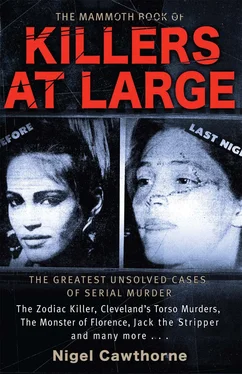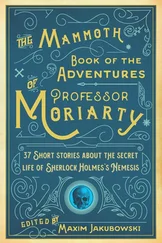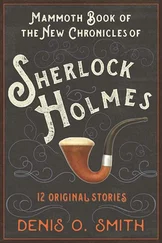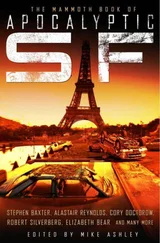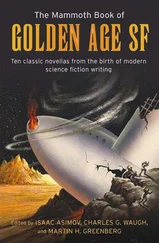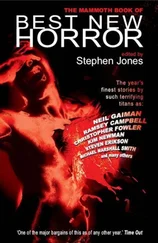“Nobody had ever looked at them all because of the sheer number we get,” said Captain Ed Winter, head of the coroner’s serial homicide team. “When you start looking at them, there are similarities. There is no one else tracking this. The goal of this unit is to track possible serial-related homicides and supply law enforcement with data to help solve the murders.”
The list was circulated to police agencies in the area and detectives were asked to investigate whether there were any similarities between cases on the list and those they were working on. An investigator from the coroner’s special unit now turns out every time a body is dumped in LA County.
Another weapon in the investigators’ armoury is Proposition 69, which was approved by California voters in 2004. It allows authorities to collect DNA samples from anyone convicted of a felony and from all adults arrested on suspicion of murder and sex crimes. In 2009, the law will be extended to include any person arrested on suspicion of any felony and some misdemeanours, regardless of whether they are convicted.
Meanwhile the Figueroa corridor, a 30-block span of one of South LA’s most dangerous territories that runs from Vernon Avenue to 120th Street, will continue to provide plenty of victims for the serial killers at large. It is peppered with $15-an-hour hotels, crack houses, liquor stores and used-car lots, along with Gospel, Baptist and Evangelical churches. The prostitutes lean on fences, hang out in phone booths or strut down the sidewalks, waving to catch the eye of eager Johns who drive slowly by. Some of the prostitutes are local; others come in from outside or bounce back and forth between LA and Las Vegas. Most are African-American, aged range between 14 and 50. Some are “strawberries”—a women who turn the occasional trick to feed a drug habit. Rates are low. A blow job costs $20 to $40. Oral stimulation followed by full sex costs about $50. The LAPD’s Southeast vice unit gets regular calls from residents complaining about prostitutes blowing Johns in cars outside their homes.
There is less prostitution in the area than there was in the 1980s, when the Southside Slayer was at work. Then dozens of girls could be seen hanging out on corners with their pimps. Now things have changed. Most of the women work on their own without pimps. They stand on the corners alone, away from other girls. There is less competition that way, but it also makes them more vulnerable. Some of the women carry pocket knives, screwdrivers or box cutters. Most don’t.
“These girls think they are good judges of character,” says Southeast Division Sergeant Roy Gardner. “But these guys don’t have on their foreheads that he is a serial rapist killer.”
And there are no shortage of them. The LAPD cold-case unit has gone back to processing the 1980s cases. Recently they have added another possibly related case to the list—that of 21-year-old Diane Johnson, whose partially clothed body was found by two passing motorists on 9 March 1987, in a roadway construction area west of the Harbor Freeway at 10217 South Grand Avenue. She had been strangled.
But some progress has been made. Shepard says that DNA evidence now possibly links two of the Southside Slayer victims with two suspects who are currently in custody on unrelated charges. Whether either one will ever be charged depends on the results of months, possibly years of investigation.
In November 2004, 38-year-old pizza deliveryman Chester Turner was charged with the murders of 13 women between 1987 and 1998, ten of them in the Figueroa Street area. Victims were largely homeless women, prostitutes or drug users. He sexually assaulted them before strangling them and dumping their bodies in alleys, vacant buildings or, in one case, a portable toilet. Among them was Diane Johnson. Intriguingly, cat hair was found on some of the victims, as it had been on some of the victims of the Southside Slayer.
Turner was caught after being required to supply a sample to California’s Combined DNA Index System after he was sentenced to eight years in prison for sexually assaulting a 47-year-old woman in March 2002. DNA may yet help track down the killer of Princess Berthomieux—and the killers of all the other victims in South LA, Pomona and Fresco who are still at large.
Madison’s Capital City Murders
On a May evening in 1968, the body of 18-year-old Christine Rothschild was found hidden behind some shrubbery outside Sterling Hall, the mathematics building on North Carter Street in the campus of the University of Wisconsin at Madison. The discovery was made by a male student and it was thought that she had been killed that morning while out jogging. She had been stabbed 12 times in the chest.
Christine had enrolled at the University of Wisconsin the year before after having graduated with honours from Senn High School in Chicago, where she had lived in a modest home on the North Side with her father—the president of a brokerage company—her mother and her three sisters. A good student, Christine enjoyed her classes and hoped to become a journalist when she graduated. She was good-looking, with long blonde-brown hair and earned money in the summer as a model for department store catalogues.
The murder weapon was never found and, throughout the summer, one suspect after another was discounted. At one point a $5,000 reward was offered for information relating to Christine’s murder. This solicited no new leads.
Any further progress in the Rothschild case was then overtaken by events. At around 3.29 a.m. on 29 June 1969, a massive explosion rocked the Capital City campus. Two sticks of dynamite had been detonated outside the Administration Building. More than 700 windows were shattered. The blast created a four-foot crater in the reinforced concrete floor of the entranceway and the ceiling of the room underneath fell down. Fortunately, the late hour meant that the area was deserted and there were no casualties. No one claimed responsibility for the explosion and, even though the faculty offered a reward of $10,000, no one was ever arrested for the crime.
Just over a year later, on 24 August 1970, Sterling Hall—where Christine Rothschild’s body had been found—was also bombed. A 33-year-old researcher died in the blast. This time there suspects and warrants were issued, charging four men with conspiracy, sabotage and destruction of government property. Three of them were arrested and convicted of the bombing, but it has never been established if the two bombings were connected.
By then Christine Rothschild’s murder was forgotten about, except by those who were close to her. It languished in the “cold-case” file for eight years until 21 July 1976. Then memories were jogged when the charred and decomposed remains of a young woman were found by real estate assessors in a gully beside Old Sauk Pass Road some 14 miles northwest of Madison.
A post mortem revealed that the woman had been dead for at least ten days, but the corpse was in such a bad state that the cause of death could not be established. However, dental records and a fractured collarbone allowed her to be identified. She was 20-year-old Debra Bennett. She had been staying in the Cardinal Hotel downtown Madison after being evicted from her apartment. A native of Ridgeway in Iowa County, she had only been in the area a short time. This left detectives with little evidence and no suspects. Then mysteriously, three weeks after Debra’s body had been discovered, her room key was mailed back to the hotel. Tantalizing though this was, it moved the case little further ahead. There was no note with the key, no return address on the envelope, nor any other identifying marks. The murder of Debra Bennett then joined Christine Rothschild’s in the “cold case” file.
Читать дальше
